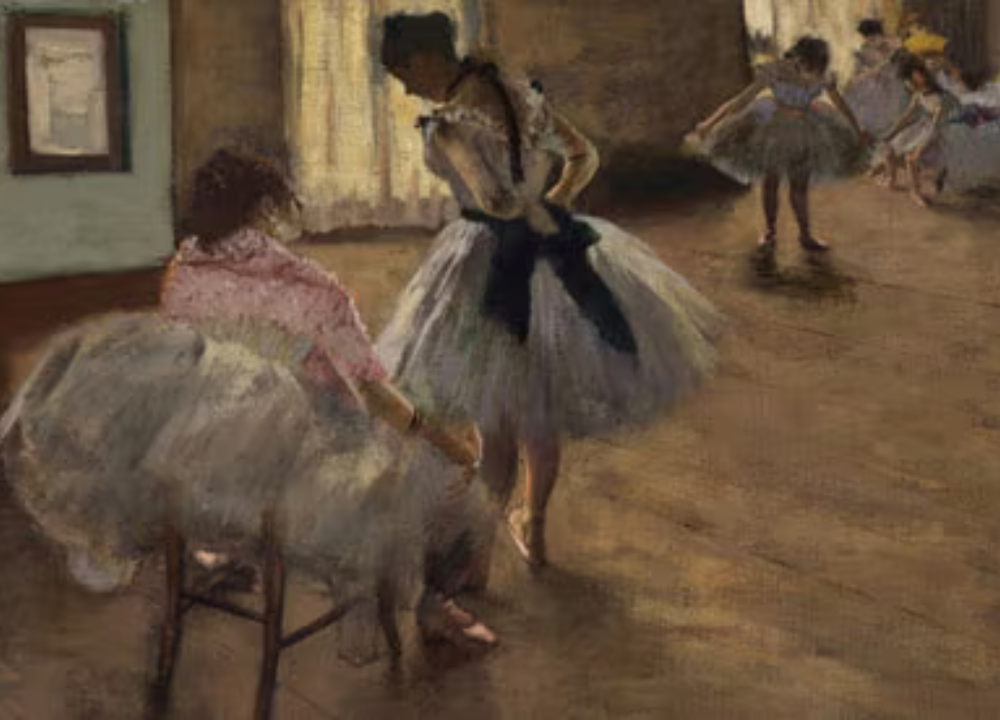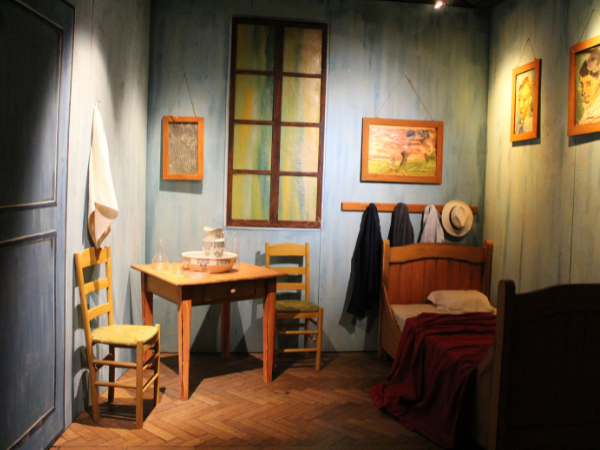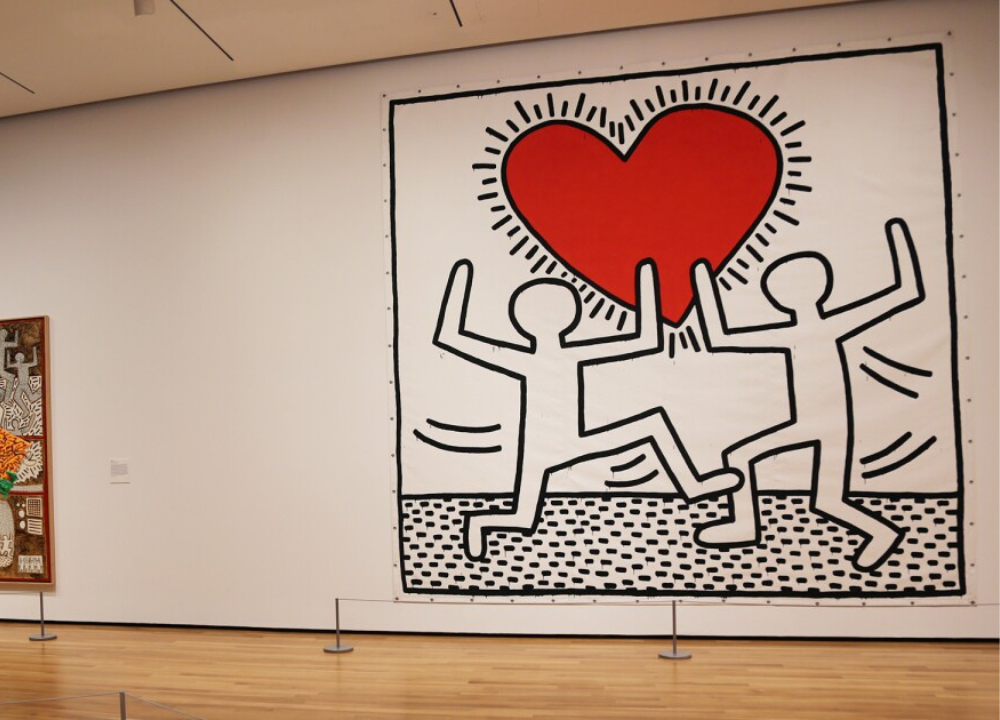Edgar Degas created some of the best artworks known for their innovation, mastery, and influence in the art world. Edgar Degas, a renowned artist, revolutionized the art world with his innovative techniques and mastery of various mediums.
His exceptional artworks continue to have a profound influence on the art scene even today. Degas, who primarily worked as a painter and sculptor, was a key figure in the Impressionist movement. His relentless exploration of different subject matters, such as ballet dancers, racecourses, and bathers, showcased his keen observation skills and attention to detail.
Degas’ unique use of perspective, bold brushstrokes, and unconventional compositions set him apart from his contemporaries, making him one of the most celebrated artists of his time. We will delve into some of Degas’ best artworks, exploring the themes and techniques that defined his exceptional career.
Early Life And Influences
Edgar Degas, born Hilaire-Germain-Edgar De Gas, was a French artist known for his paintings, sculptures, prints, and drawings. His early life and influences played a significant role in shaping his artistic journey.
Family Background
Degas was born into a well-to-do family in Paris, France, on July 19, 1834. His father, Augustin De Gas, was a banker, and his mother, Celestine Musson, was an American from New Orleans. This multicultural heritage influenced Degas’ artistic sensibilities, exposing him to diverse cultural influences.
Artistic Education
Degas’ artistic education began at an early age, receiving drawing lessons from an Italian artist, Achille Deveria, and later studying at the École des Beaux-Arts in Paris. His exposure to classical art and academic training laid the foundation for his artistic style, combining traditional techniques with innovative approaches.
Style And Techniques
Edgar Degas, renowned for his innovative style and techniques, created masterpieces that still captivate art enthusiasts today.
Innovative Use Of Mediums
Degas revolutionized the art world by experimenting with various mediums such as pastels, oils, and charcoal.
Influence Of Photography
The influence of photography can be seen in Degas’ artworks through his unique composition and framing choices.
Fascination With Dance
Edgar Degas, renowned for his captivating artworks, had a profound fascination with dance that transcended mere admiration. His masterpieces eloquently depict the grace, beauty, and poise of dancers in various forms.
Ballet Scenes
In his artistic journey, Degas immortalized the elegance of ballet through his enchanting ballet scenes. His meticulous attention to detail and skillful portrayal of the dancers’ movements bring these performances to life on canvas.
Backstage Glimpses
Diving beyond the spotlight, Degas also captured the raw essence of dance through his backstage glimpses. These intimate portrayals reveal the preparation, anticipation, and candid moments that occur behind the scenes of a ballet performance.
Portrayal Of Daily Life
Edgar Degas, a master of Impressionism, captured the essence of daily life through his remarkable artworks. His portrayal of the everyday activities in coffeehouses, cabarets, and domestic settings offers a glimpse into the realism and vibrancy of the late 19th-century Parisian society.
Coffeehouse And Cabaret Scenes
In his portrayal of coffeehouse and cabaret scenes, Degas expertly depicted the bustling atmosphere, the animated conversations, and the intricate social dynamics. His use of vibrant colors and dynamic compositions immerses the viewers into the lively ambiance of these social spaces, capturing the spontaneity and energy of daily life.
Domestic Settings
Within domestic settings, Degas showcased intimate moments of daily life, such as women at their toilette or engaged in household activities. His attention to detail and ability to convey emotion and human connections bring to life the simplicity and complexity of everyday domestic scenes.

Relationship With Impressionism
Discover the captivating relationship between Impressionism and Edgar Degas’ finest artworks. Dive into the charm and elegance of his paintings, which showcase the artist’s innovative techniques and distinctive style. Explore the harmonious fusion of light, movement, and human emotion that defines Degas’ masterpieces.
Relationship with Impressionism
Edgar Degas, a renowned French artist, had a deep connection with the Impressionist movement. While he was not one of its founding members, he became closely associated with the Impressionists and played a significant role in shaping the movement. Degas’ artworks often showcased the characteristics of Impressionism, such as capturing fleeting moments and exploring the effects of light and color. However, Degas also diverged from the traditional Impressionist style, creating a unique and distinctive approach to his art.
Connection With Other Impressionist Artists
Degas had close ties with other prominent Impressionist artists of his time. He exchanged ideas and collaborated with artists like Claude Monet, Pierre-Auguste Renoir, and Camille Pissarro. The Impressionists shared a common interest in capturing scenes from everyday life and breaking away from the academic conventions of the time. Degas’ friendships and artistic exchanges with these artists greatly influenced his work, allowing him to contribute to the development of Impressionism while also maintaining his individual style.
Divergence From Impressionist Style
Despite his affiliation with the Impressionists, Degas also had distinct features that set him apart from the traditional Impressionist style. While he shared their interest in capturing fleeting moments and exploring light, Degas focused more on depicting indoor scenes and the world of ballet dancers, horse racing, and the theater. He often used unconventional angles and perspectives, emphasizing the human figure and its movement.
Additionally, Degas had a meticulous approach to his artwork, paying careful attention to details and composition. This attention to detail and his emphasis on line and form differentiated him from the looser brushstrokes often associated with Impressionism. In conclusion, Edgar Degas had a close relationship with the Impressionist movement, both in terms of his connections with other Impressionist artists and his artistic style.
While he shared commonalities with the movement, Degas also ventured into his own artistic territory, exploring subjects and techniques that were distinctly his own. This blending of influences and personal style contributed to Degas’ unique position within the Impressionist movement and his lasting impact on the art world as a whole.
Exhibition And Legacy
Exploring the Exhibition and Legacy of Edgar Degas reveals a profound insight into the Public Reception of his artworks as well as their Enduring Influence on the art world. Degas’ works continue to captivate audiences and leave a lasting impact on art history.
Public Reception
- Degas’ art was initially met with mixed reviews, with some critics praising his innovative techniques while others critiqued his unconventional approach.
- Over time, his unique style gained widespread recognition, and his works became revered for their depictions of everyday life and movement.
- His ability to capture the essence of his subjects in motion resonated with viewers, paving the way for his enduring popularity.
Enduring Influence
- Degas’ influence can be seen in the work of numerous modern artists who draw inspiration from his emphasis on capturing movement and light.
- His experimentation with composition and perspective continues to influence artists across various mediums, from painting to photography.
- The legacy of Degas lives on through the continued study and appreciation of his artworks, ensuring that his impact on the art world endures.
Controversies And Criticisms
When exploring the artistic legacy of Edgar Degas, it’s essential to address the controversies and criticisms that have surrounded his work. As with many renowned artists, Degas faced both praise and pushback from critics and the public.
Reactions To Subject Matter
Degas’s depiction of ballerinas and their rehearsals was met with mixed reactions. Some praised his ability to capture the grace and elegance of the dancers, while others criticized the sometimes raw and unidealized portrayal of these young women. The intimate and behind-the-scenes look at the ballet world was seen as daring and unconventional for its time.
Critiques Of Technique
In terms of technique, Degas’s use of unusual perspectives and framing, along with his experimentation with light and movement, invited both admiration and skepticism. Some hailed his innovative approach, while others questioned the departure from traditional artistic norms. The perceived lack of precision in his later works also drew varying opinions, with some deeming it as a deliberate departure from the expected, while others saw it as a decline in skill.
Final Years And Beyond
Exploring Edgar Degas’ remarkable artistic journey sheds light on his final years and posthumous recognition.
Health Challenges
Degas faced health challenges in his later years, such as failing eyesight and limited mobility, impacting his ability to create art.
Posthumous Recognition
The true brilliance of Degas’ works gained posthumous recognition, solidifying his legacy as a master of Impressionism.
Frequently Asked Questions
What Are 3 Of Edgar Degas Most Important Artworks?
Edgar Degas’ most important artworks include “The Dance Class,” “L’Absinthe,” and “The Bellelli Family. ” These pieces showcase his mastery of capturing movement, emotion, and everyday life.
What Is Unique About Edgar Degas Paintings?
Edgar Degas’ paintings are unique for capturing movement and everyday scenes with his signature use of light and color.
Where Can You Find Edgar Degas Paintings?
You can find Edgar Degas paintings in museums, art galleries, and private collections worldwide.
Who Is Best Known For Painting Ballet Dancers?
Edgar Degas is best known for his paintings of ballet dancers.
Conclusion
Edgar Degas’ remarkable art pieces capture the essence of beauty and movement in a unique way. His use of light and color, and his ability to depict the fluidity of human form, makes his artworks truly stand out. Exploring his diverse body of work not only provides insight into his talent, but also offers a glimpse into the rich world of Impressionist art.




